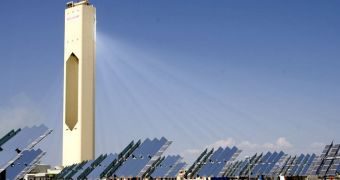A new analysis demonstrates that the United States can move to getting its power from clean and sustainable sources even today, using existing technologies, and costs roughly comparable to those associated with conventional energy. However, the societal and political will for this are lacking.
There are, in essence, the main obstacles that stand between the country getting its electricity from renewable, non-polluting sources. The experts who conducted the work say that the effort needed to make the switch happen would be massive.
In fact, they would be on the same scale as the Moon landings, the investigators say. But the bottom line is that all of this is achievable now, with current technologies, and at acceptable costs.
Study coauthors Mark Z. Jacobson, a researcher at the Stanford University and Mark A. Delucchi, a researcher at the University of California in Davis, say that it's now politicians and decision-makers' turn to move clean energy initiatives ahead.
By converting the world to clean, renewable energy sources and abandoning the use fossil fuels, we could save between 2.5 and 3 million lives yearly, stop global warming and climate change, reduce pollution to oceans and the atmosphere, and develop reliable energy sources.
“Based on our findings, there are no technological or economic barriers to converting the entire world to clean, renewable energy sources. It is a question of whether we have the societal and political will,” Jacobson explains.
The Stanford professor of civil and environmental engineering published the results of the research in the latest issue of the esteemed journal Energy Policy. In the planned approach, solar and wind energy would cover 90 percent of the world's needs.
Wave and tidal power would account for 2 percent of the total needs, while geothermal and hydroelectric sources would account for the other 4 percent. The remaining percents would be covered from other, more experimental sources.
Electricity and hydrogen fuel cells would replace oil, gasoline, diesel and natural gas as the main energy sources for cars, ships and trains, whereas liquid hydrogen would replace kerosene as airplane fuel.
“We wanted to quantify what is necessary in order to replace all the current energy infrastructure – for all purposes – with a really clean and sustainable energy infrastructure within 20 to 40 years,” says Jacobson, adding that the objective is entirely achievable within this time frame.
“The most important thing is to combine renewable energy sources into a bundle. If you combine them as one commodity and use hydroelectric to fill in gaps, it is a lot easier to match demand,” the expert concludes.

 14 DAY TRIAL //
14 DAY TRIAL //